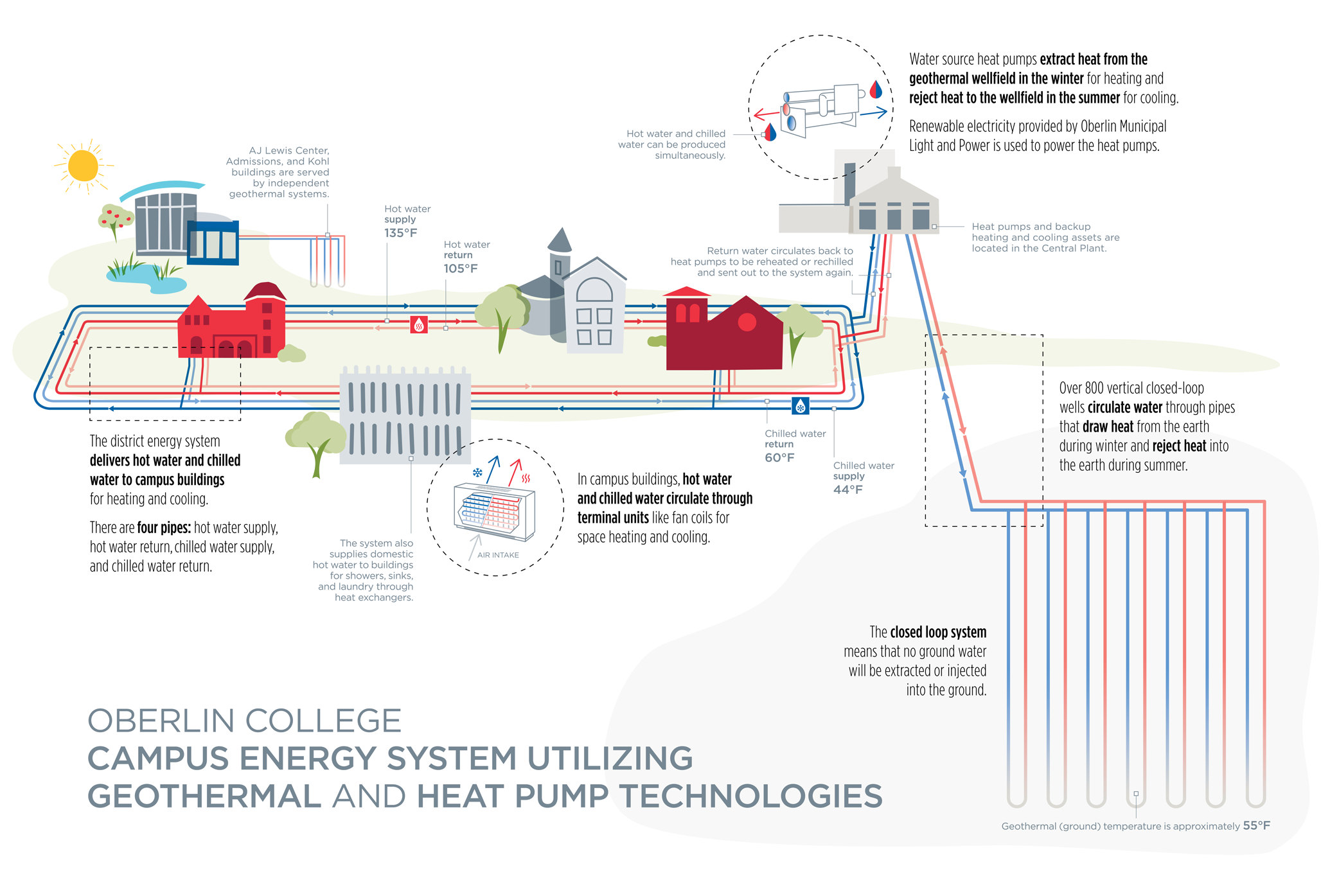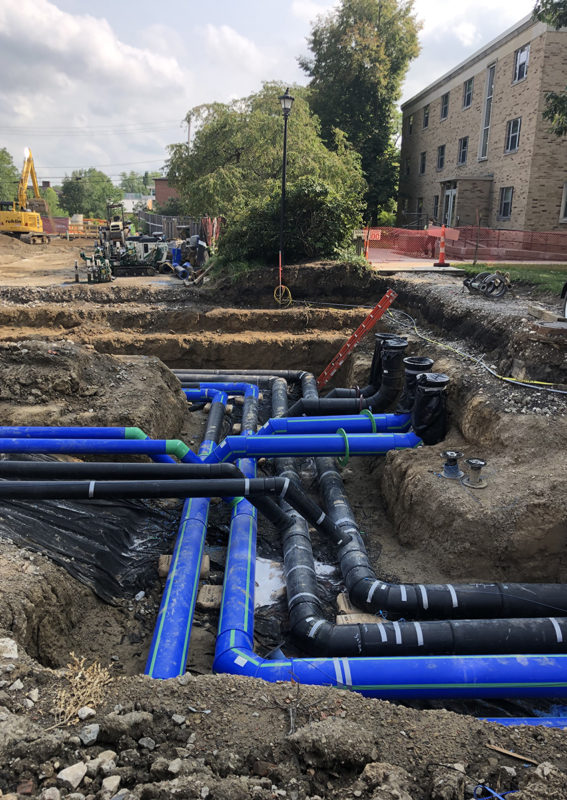Technology

Campus District Energy
Like many campuses, Oberlin College has a district energy system. A district energy system heats and chills water at a central plant, and then distributes the water through an underground network of pipes connected to buildings for heating and cooling. Oberlin’s Sustainable Infrastructure Program included transitioning the system from steam heating to hot water to increase efficiency and safety.
Learn more about district energy systems from the International District Energy Association.
Carbon-Free Energy Source
In 2019, several low-carbon or carbon-free sources were reviewed by the Oberlin College Board of Trustees as options to serve the campus including:
- Aquifer thermal energy storage
- Geothermal
- Biofuels
- Biogas
- Biomass
- Capturing heat from power production using landfill gas
- Incorporating either solar or wind production with electric boilers
These scenarios were compared to what is known as a “business as usual” scenario, which looks at more traditional energy production with fossil fuels.
These options were thoroughly vetted with consideration for environmental impact, greenhouse gas emissions, financial impact, and ease of integration into existing campus systems.
Geothermal was selected as the best carbon-free source option for Oberlin College.
About Geothermal
A geothermal system uses the constant temperature of the earth to heat and cool buildings.
At Oberlin College, 850 vertical wells 600 feet deep circulate water through pipes that draw heat from the earth during winter and reject heat into the earth during the summer. It’s a closed loop system, which means that no ground water is extracted or injected into the ground.
Water-source heat pumps extract heat from the geothermal wellfield in the winter for heating and reject heat to the wellfield in the summer for cooling. Renewable electricity provided by Oberlin Municipal Light and Power is used to power the heat pumps.
In campus buildings, hot water and chilled water circulate through terminal units like fan coils for space heating and cooling.
Learn more about geothermal district energy from the European Geothermal Energy Council, a nonprofit that promotes the European geothermal industry.
Distribution Upgrade: Steam to Hot Water
Oberlin’s energy system previously used steam in its distribution pipes to heat buildings, which is very common for hundred-year-old systems. The new energy system is closed-loop hot water, operating at a much lower temperature than the old steam system.
Hot water systems make it easier to integrate low or no-carbon energy sources. To heat building spaces, hot water is circulated through the building pipes and out to radiators or fan coils that warm the air in rooms and hallways. Additional radiators and coils in air handling units may be installed as part of the project to accommodate the lower water supply temperatures.
Building and System Efficiency
The modernization of campus buildings included one or more of the following:
- Upgrading piping throughout buildings
- Upgrading equipment such as air handlers
- Installing temperature and pressure sensors
- Introducing chilled water connections in buildings without cooling
- Installing cooling to select dorm rooms and common spaces
- Installing fan coil units in select dorm rooms
- Upgrading building controls
- Installing new humidifiers and dehumidifiers
- Installing in-building heat pumps or boilers
- Installing duct work to connect new equipment to existing systems
- Upgrading electrical infrastructure
- Upgrading water lines for fire protection
- Installing domestic hot water heat exchangers
- Implementing other building upgrades as may be needed on a building by building basis

